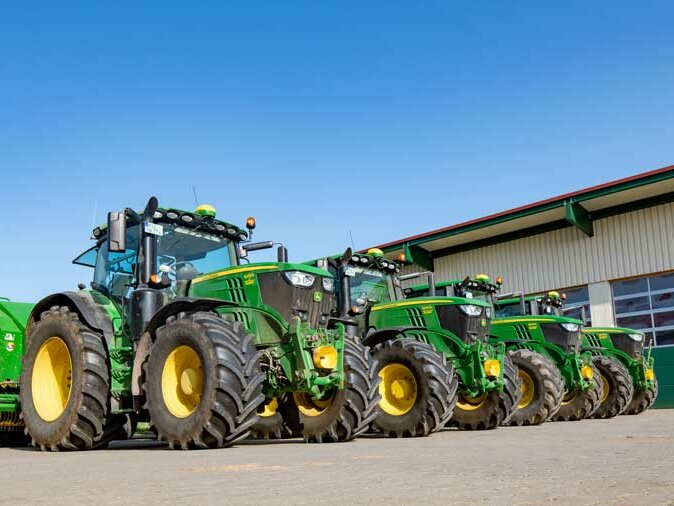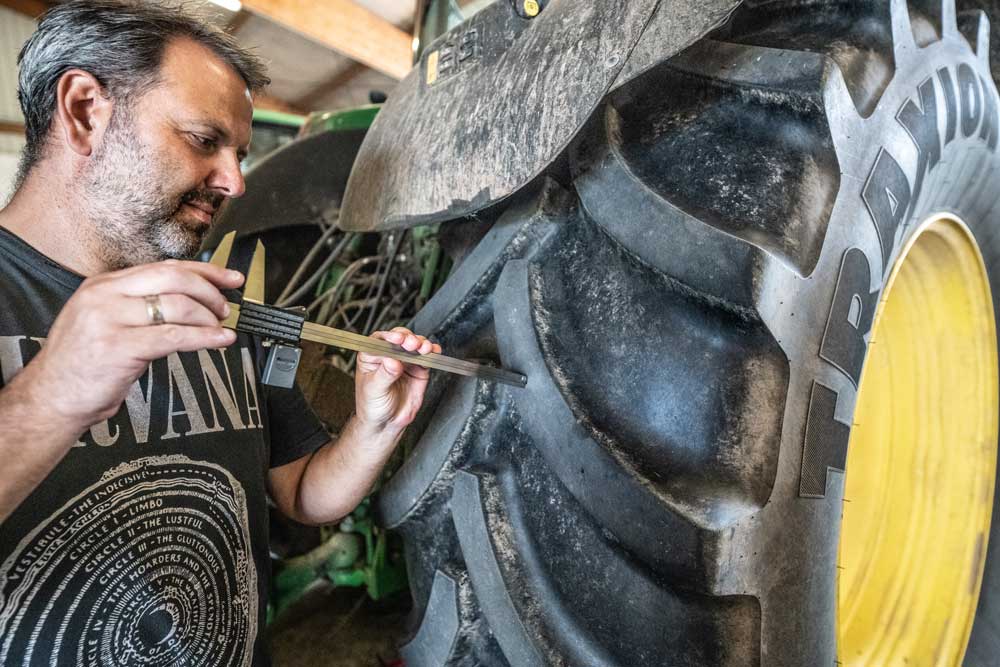Vredestein tyres in long-term test - Wear under real conditions
By Niels Conradi, DLG Test Center Machinery & Inputs
With around 520 m t forwarded product, the agricultural sector in Germany as “incidental transporter” freights substantially more goods than the state railway system, and about double the tonnage shipped per barge in inland waterways thus taking second place only behind truck transport. Whereas tyre wear in field work is comparatively light, the situation is different out on the road. In particular with heavy transport journeys, i.e. with full loads and possibly steep inclines, tractors experience markedly increased tyre wear. With the euro price for a set of tractor tyres now well into five-figures, longer intervals between tyre replacement can represent real savings.
New tyre wear test procedure
To enable recording and evaluation of wear indications based on concrete and comparable data, DLG experts have developed a new procedure. In preparation for testing, each test strip used for this long-term investigation was marked out with 12 predefined measurement points. Further to this, on every tyre six holes were bored into lug pairs on opposite sides of the tread. Measurement pins were glued into the holes to act as depth control stops for subsequent recording. Additionally, every measurement point was coded to ensure accurate recording and measurement of actual wear always at the same point. This enabled a statistical general overview of wear resistance performance over the total tyre circumference, as well as longitudinal and transverse wear.
Equipping test tractors
A total of six series-identical John Deere 6215R tractors from two agricultural contractor firms were fitted with tyres during the test. Because of the high rate of wear on the road, the predetermined test tasks included as much work on the road as possible. All tractors were fitted with a JD Link telematic system over which speed could be precisely timed and documented. Based on this recorded data and previously established limits, the working hours spent in idling, field work and roadwork could be separately determined.
In the test, one tractor per contractor was fitted with Vredestein Traxion XXL tyres, sizes 600/70 R28 on the front axle and 710/70 R42 on the rear. The other series-identical comparison tractors were fitted with tyres of the same dimensions from a prominent premium manufacturer.
Results after some 1200 working hours
All tractors in both firms fitted with the respective tyres absolved some 1,200 working hours apiece in the test and all managed a proportion of about 30% road travel, almost 50% fieldwork and around 20% idling. Hereby, the Vredestein Traxion XXL tyres achieved wear resistance performance substantially better than the comparison reference. Further details have been processed by the DLG experts in the test report which is available free of charge under www.DLG-test.com. From the resultant data it can be stated that markedly prolonged tyre replacement intervals can be assumed in practice.
Summary for practical use
Costs can be saved through tyres. This can be achieved through replacing worn tyres with cheaper models or brands. However, an interesting alternative features tyres from the premium segment as original equipment which, as with the Vredestein Traxion XXL, can be expected to deliver substantially more working hours. This, in particular, refers to tractors working a high proportion of hours on the road, typically models from the class “all-rounder” or, as in this test, tractors from agricultural contractor firms.





